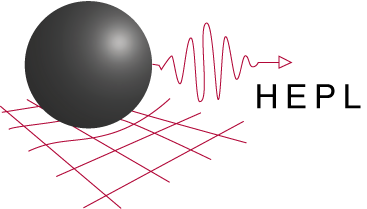News & Events
HEPL Seminar
Robert M. Glaeser
Life Sciences Division, Lawrence Berkeley National Lab
Electron Microscopy of Unstained, Hydrated Biological Macromolecules
Abstract: The development of electron microscopy of biological macromolecules has recently advanced to the point that structures of large, symmetrical particles can be obtained at a resolution similar to that previously achieved only by X-ray crystallography. Impressive as this may be, it is still well short of what we know that physics would allow. One of the known limitations in the current method is due to the fact that images of unstained, hydrated specimens must be recorded in an intentionally defocused condition in order to generate contrast for such “weak-phase” objects. Images thus could be greatly improved by implementing the electron-optical equivalent of the quarter-wave plate that is used in Zernike (in-focus) phase-contrast light microscopy.
Following a brief introduction of background information, the main purpose of this discussion is to describe our attempts to avoid unwanted electrostatic distortions (patch potentials) that exist close to the surfaces of microfabricated phase-plate devices. A partially successful approach is to coat surfaces as conformally as possible with amorphous (graphitic) carbon. Further improvements would be very useful, however, since the carbon coating appears to be modified when touched by the electron beam, resulting in a local change in the electrostatic potential. The search for a perfect surface continues …
Biography: Dr. Robert M. Glaeser is an Emeritus Professor at UC Berkeley, and a Scientist at Lawrence Berkeley National Laboratory. His research career
has involved a mixture of (1) development of methodology for structural biology, with a major emphasis on electron microscopy, and (2) applications of
this methodology to specific, biological projects. Areas of previous work that are relevant to the current proposal have included: establishing the extent
to which radiation damage limits imaging at high resolution, and the need to use averaging of noisy images to overcome those limitations; the use of
frozen-hydrated specimens to preserve native, hydrated structure and, to a small extent, to improve the degree to which biological macromolecules
can tolerate radiation damage; characterization of the resolution-limiting phenomenon of beam-induced movement; development of software tools
for automated particle boxing and other aspects of high-throughput single-particle EM; and development of a microfabricated electrostatic device for
in-focus phase contrast in transmission electron microscopy. My role as PI on this proposal is a natural extension of my similar role in the previous 4 years
of the project.
Location: Physics/Astrophysics Building, Conference Rooms 102 & 103
Wednesday, February 1, 2012, 4:15pm - 5:30pm
Light refreshments available at 4pm; Presentation begins 4:15pm. Open to all.
Join our HEPL Seminar Mailing list!
Send an email to majordomo@lists.stanford.edu and type
subscribe heplseminars user@stanford.edu
in the body of the message where user@stanford.edu is your email address
You will receive an email confirmation. We hope to see you at a HEPL Seminar soon.


